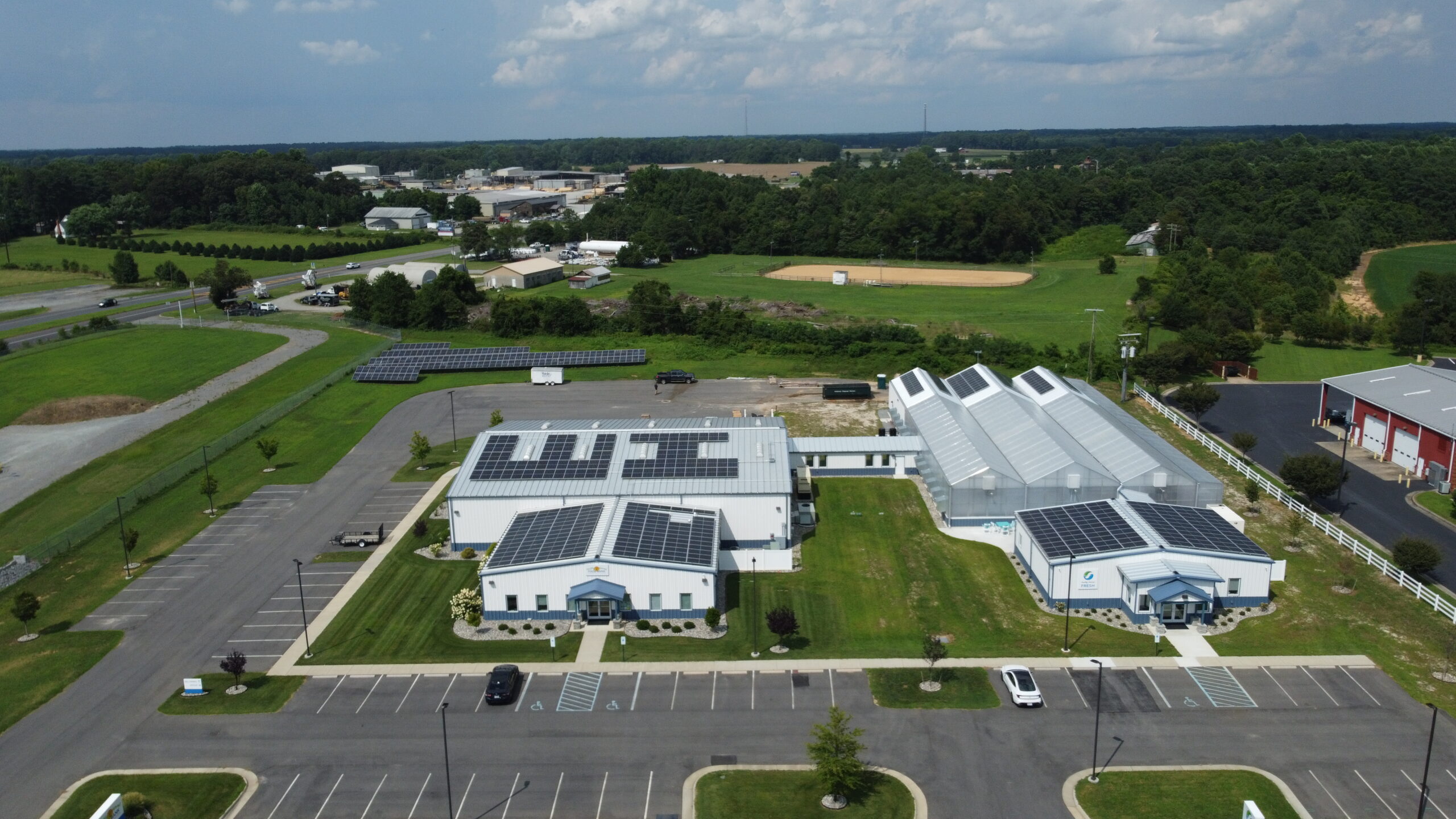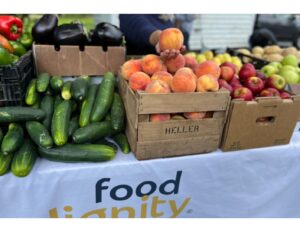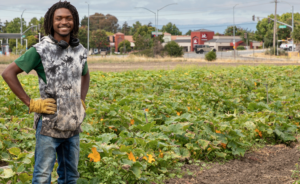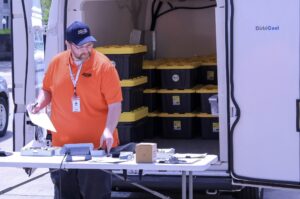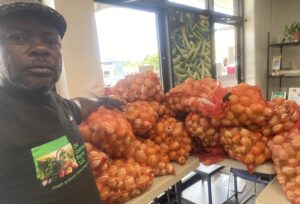Driving to a ballgame five years ago, Mark Kleinschmidt, CEO of Healthy Harvest Food Bank, turned to his then 12-year-old son and asked, “What can I do in my job that’ll get you to do what I do without making you do what I do?” Kleinschmidt’s son pondered for a bit before responding that it would need to be something that involved hands-on learning, “knowing that we did it, we were part of it, we made it.”
It took Kleinschmidt a while, but he figured out what that “something” would be. Five years later, Healthy Harvest (serving six counties in Virginia) is going all-in on aquaponics, a system that grows produce by nurturing plant roots in water that is filled with nutrients from farm-raised fish. Everything happens in a single, integrated system.
Aquaponics was a “crazy idea” that turned out to be “great for our organization,” said Kleinschmidt. In addition to the promise of year-round access to fresh, healthy produce, the facility will provide hands-on education for local schoolchildren in a cutting-edge environment. The 15,000-square-foot aquaponics facility, which is about to open under the name Healthy Harvest Fresh, will include a 2,000-square foot classroom and double as a research lab for students.
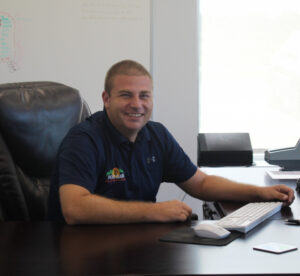
“It’s going to be completely different than food banking,” said Kleinschmidt. “This will be education first, and then of course, the produce side.” Students will learn the system, decide what to grow, then make it happen, learning as they go. Healthy Harvest plans to work with two schools for the first six months to a year, then expand “as big as we possibly can,” he said.
The opportunity is coming at a start-up cost well in excess of initial estimates, due partly to the facility’s complexity and partly to the learning curve. While Healthy Harvest budgeted for a $2 million facility, costs to date are $3.6 million. Besides post-Covid inflation, Kleinschmidt explained, “The downside with building an aquaponics system is that nobody had any experience building it. We’re paying the cost to learn how to do it.”
The facility is operated through a centralized control panel akin to a smart home system, rather than mechanical switches local architects and engineers were accustomed to. “That was the hardest part,” Kleinschmidt said. “People doing their job, thinking they understood what they were doing, and realizing that, no, you’re totally missing how it works here.”
As with any facility, there will be ongoing costs, too. Aside from labor – the facility will have two full-time employees to begin with – electricity will be a significant expense. Kleinschmidt anticipates the annual electric bill could be as high as $24,000, although he expects solar panels will bring the annual actual outlay closer to $12,000. “We’ll have to see what it’s going to cost us,” he said. “I really don’t know.”
From a water perspective, aquaponics is very efficient. While the water used in a purely hydroponic system ultimately is lost as wastewater, the water cycle in aquaponics “just kind of continues [between fish and plants] on a huge cycle, so you have virtually no waste of water whatsoever,” Kleinschmidt explained.
Healthy Harvest has big plans for both the fish and the produce sides of the facility. While it will begin farming tilapia, which has a reputation as an “easy” fish, it plans eventually to switch to trout, which has a “better name as a fish,” Kleinschmidt said. “We already have chillers we put in place now, so we can change the water temperature down to make it colder for them,” he added. As for produce, the plan is to grow “a little bit of everything,” from lettuce, cucumbers, and tomatoes to microgreens.
After more than five years of thinking, planning, and building, Healthy Harvest Fresh is on the verge of flipping the switch and starting operations. It’s taken a huge amount of effort to get to this point and it’s going to take a bit of courage to get beyond it. Next to fundraising to make the facility self-sufficient, Kleinschmidt sees the biggest risk as “us literally doing something wrong and losing everything in [the facility] and everything dying, all the fish dying, all the plants die and then we’re two or three months from getting back to where we were, if not longer. That makes us very nervous.” Nerves aside, the tanks are filling with water and, if all goes as planned, fish will be added to the tanks the week of September 25th.
At maximum production, Kleinschmidt estimates the facility will yield 6,000 pounds of fish and 120,000 pounds of produce annually. In addition to distributing fish and produce to food pantries, he’s exploring options to supply hydroponically grown produce for salad bars at schools whose students volunteer in the facility. He also envisions a small amount of retail sales to pique potential donor interest.
Even with the cost overruns and the stress of launching, Kleinschmidt would do it all over again. In the “very rural area” the food bank serves, “allowing these kids to see something that they’ll probably not see their whole entire life to me is very beneficial,” he emphasized, and the year-round access to fresh produce “will totally change what we’re doing for our clients.”
Ultimately, he said, the facility is about three things – “education, year-round fresh produce, and allowing people to dream beyond their imagination.” It’s part of his commitment to changing what a food bank does. “I really wanted to make our food bank different. I wanted to get away from ‘Hey, here’s food, we’re done.’” – Amanda Jaffe
Amanda Jaffe is a writer and former attorney with a deep interest in organizations and mechanisms that address food insecurity. In addition to Food Bank News, her essays and articles have been published in a number of print and online magazines and journals. Her writing may be found at www.amandajaffewrites.com.
CAPTION FOR PHOTO ABOVE: A drone picture of the Healthy Harvest Food Bank and attached Healthy Harvest Fresh aquaponics center.
Like what you’re reading?
Support Food Bank News
